Since the launch of the TIP Open Optical & Packet Transport (OOPT) project group in 2016, it has been very exciting to see how the world’s major service providers, technology suppliers, system integrators and researchers have worked together towards building a more open, flexible and efficient network infrastructure.
The OOPT community returned to OFC after two years of Covid-19 restrictions that made only virtual interactions possible. During that time, OOPT project group participants have made a huge effort to continue delivering high quality contributions that will increase the speed of adoption for open transport (IP & Optical) solutions.
Johan Hjortas, Head of Transport Network Architecture and Strategy at Telia Company & co-chair of the TIP OOPT Project Group said: “ We are fully committed to the development of a healthy transport ecosystem that can speed up innovation and foster a healthier supply chain. The OOPT community is composed of a great set of service and technology providers and I am looking forward to continuing working with them to enable the transport networks of the future. “
Some of the latest news worth highlighting from each of our subgroups includes
- A total of 27 solutions have been listed in TIP Exchange from the various OOPT subgroups, including 4 new DCSG (Disaggregated Cell Site Gateway) and the first 3 DDBR (Distributed Disaggregated Backbone Router) listings
- More than 45 trials and deployments, from 35 different operators, across 27 countries
- New commercial DCSG deployments across North America (uGrid) & Europe (Kazakhtelecom) with IP Infusion and Ufispace
- Turk Telekom announced a DCSG field trial
- NTT completed world ultra-low latency video-transmission with OOPT Galileo Optical Transponder
- At OFC 2022 we demonstrated the first Phoenix compliant solution available in the market with NTT, Fujitsu, NEC and Wistron running on the Goldstone open source operating system
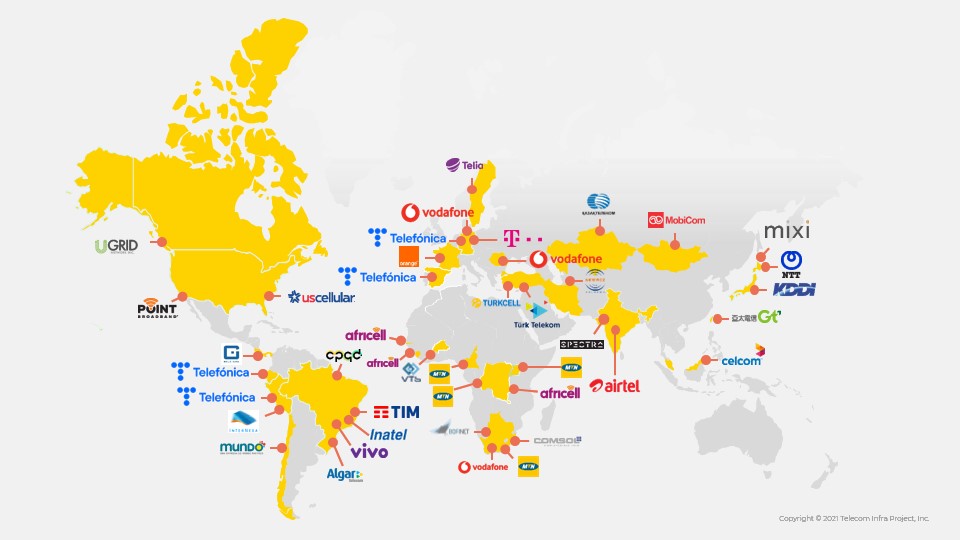
Figure 1: OOPT global trials and deployments
CANDI: Converged Architectures for Network Disaggregation & Integration
The CANDI subgroup completed its second PoC and tested 4 new operator use cases. NTT, Telefonica, Orange, Telia and Cesnet collaborated with multiple technology suppliers to test disaggregated products as well as the Open Source tools in a TIP Community Lab environment which simulates innovative topologies. The results have been shared with the community through detailed white papers available in our confluence space.
The first use case focused on service provision over a partially disaggregated optical network using Telephony Application Programming Interface (TAPI), Open Config and OOPT’s Gaussian Noise model in Python (GNPy) tool.
In the second use case, an end-to-end connection between two datacenters linked by an IP/MPLS Core was demonstrated. The DC Interconnection scenario was fulfilled by provisioning an L3VPN service by an SDN controller using OpenConfig Models and BGP-LU protocol.
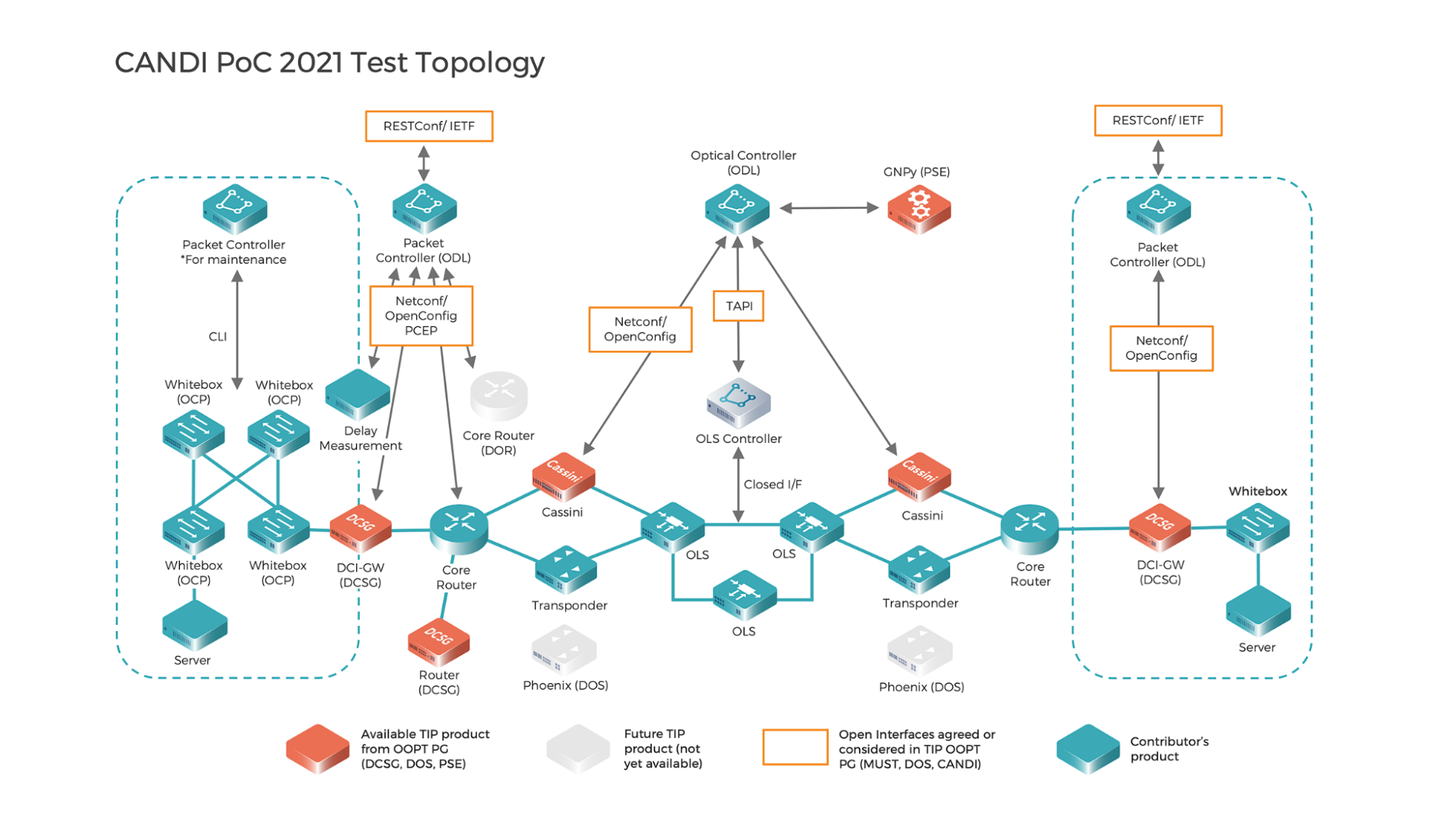
Figure 2: CANDI PoC Test Topology
The third use case was focused on e2e SLA driven provisioning using an SR-TE enabled topology. This was leveraged by monitoring the emulated delay in the network, path computation by Path Computation Element Communication Protocol (PCEP) and provisioned with an OpenDaylight SDN controller and Ansible.
For the final use case, the Network Operating System (NOS) replacement was tested where Beluganos NOS was successfully removed and replaced by the SONIC NOS on Datacenter Spine & Leaf topology with live traffic.
After this second PoC, the subgroup co-leads have decided to take CANDI to the next level. Meta will join Telefónica and NTT as subgroup co-leads and CANDI will be rebranded as MANTRA – Metaverse ready Architectures for opeN TRAnsport. Moving forward, MANTRA will focus on incubating transport technologies that can enable more enhanced immersive experiences such as AR and VR, by reducing latency and jitter while optimizing bandwidth consumption. The subgroup will develop and incubate new architectures, devices and protocols in collaboration with other industry organizations, standard bodies, as well as participant operators and vendors that can build the foundation for metaverse-ready transport networks in more cost efficient ways.
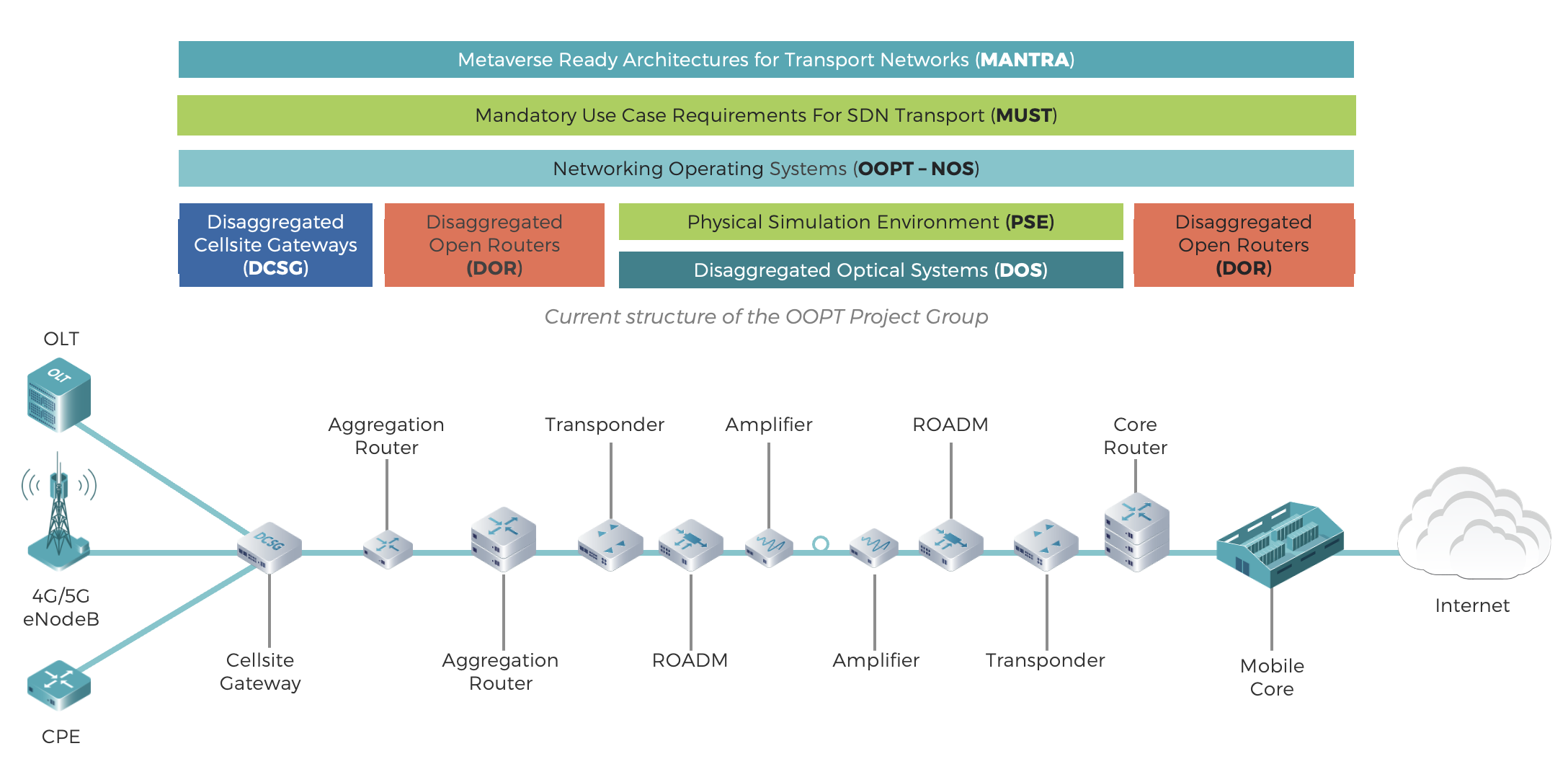
Figure 3: OOPT subgroups overview
Diego Marí, Connectivity Technologies and Ecosystems Manager at Meta and TIP OOPT Technical Lead said: “We are glad to see how the CANDI subgroup has committed and delivered the PoC and 4 use cases. Now, we are excited to see the next step as the rebranded subgroup, Metaverse Ready Architectures for Transport Networks (MANTRA).”
DOS: Disaggregated Optical Systems
We demonstrated the first Phoenix e2e setup in collaboration with Wistron, NEC, Fujitsu, Lumentum and NTT at OFC 2022. Phoenix is the first open and disaggregated transponder that supports 400G and 600G transmission. Incubated by the DOS subgroup, Phoenix will help operators evolve their 100G networks into high capacity links that support continuous traffic growth.
NTT has developed the first-ever ultra-low latency video-transmission technology capable of transmitting and receiving uncompressed 8K120p video*1 in the SMPTE ST 2110*2 over optical paths. SDI*3 signals are directly collected by the TIP OOPT Galileo optical transponder and can be sent out into a large-capacity optical path in uncompressed SMPTE ST 2110, enabling long-distance and ultra-low latency video transmission. Furthermore, direct mapping of 8K120p video from SDI to SMPTE ST 2110 using SMPTE RP 2110-23, a method for dividing video data into multiple streams, achieves a delay of less than 1 ms between the video input at transmission and video output at the receiving end.
MUST: Mandatory Use Case Requirements for SDN for Transport
As one prime example of TIP’s collaborative model, the MUST subgroup continues to complete deliverables with its 11 participant operators. With a use case approach, these deliverables define the detailed standard based requirements for all the interfaces between the different components of the SDN for Transport Architecture (SDN Controllers, IP routers, Optical DWDM transport devices, Wireless Backhaul etc.).
Based on the requirements generated by each workstream, the subgroup has initiated the Test and Validation phase following TIP’s framework. The goal is to evaluate technology provider solutions available in the market and assess their compliance against the requirements defined by the operators. Solutions that comply with the evaluation criteria will get awarded TIP’s Requirements Compliant ribbons and will then move into the testing phase in the lab. The validation process is currently open for both open DWDM transponders/terminals and for IP Routers (both detailed Technical Requirements Documents are available for OOPT participants to submit their products for evaluation). We are glad to see the solution provider community response as several of them have already submitted their applications.
The subgroup is also progressing on completing the rest of the architecture’s interfaces technical requirements. As such, the Wireless Backhaul workstream has also released its first Use Cases & Technical Requirements definition document and the latest use cases for the Northbound Interface, on the optical workstream have been published recently as a new deliverable.
The next step for IP and Optical workstreams will be the release of the SDN Controller detailed Technical Requirements Documents, which will pave the way for the test and validation activities for the controllers.
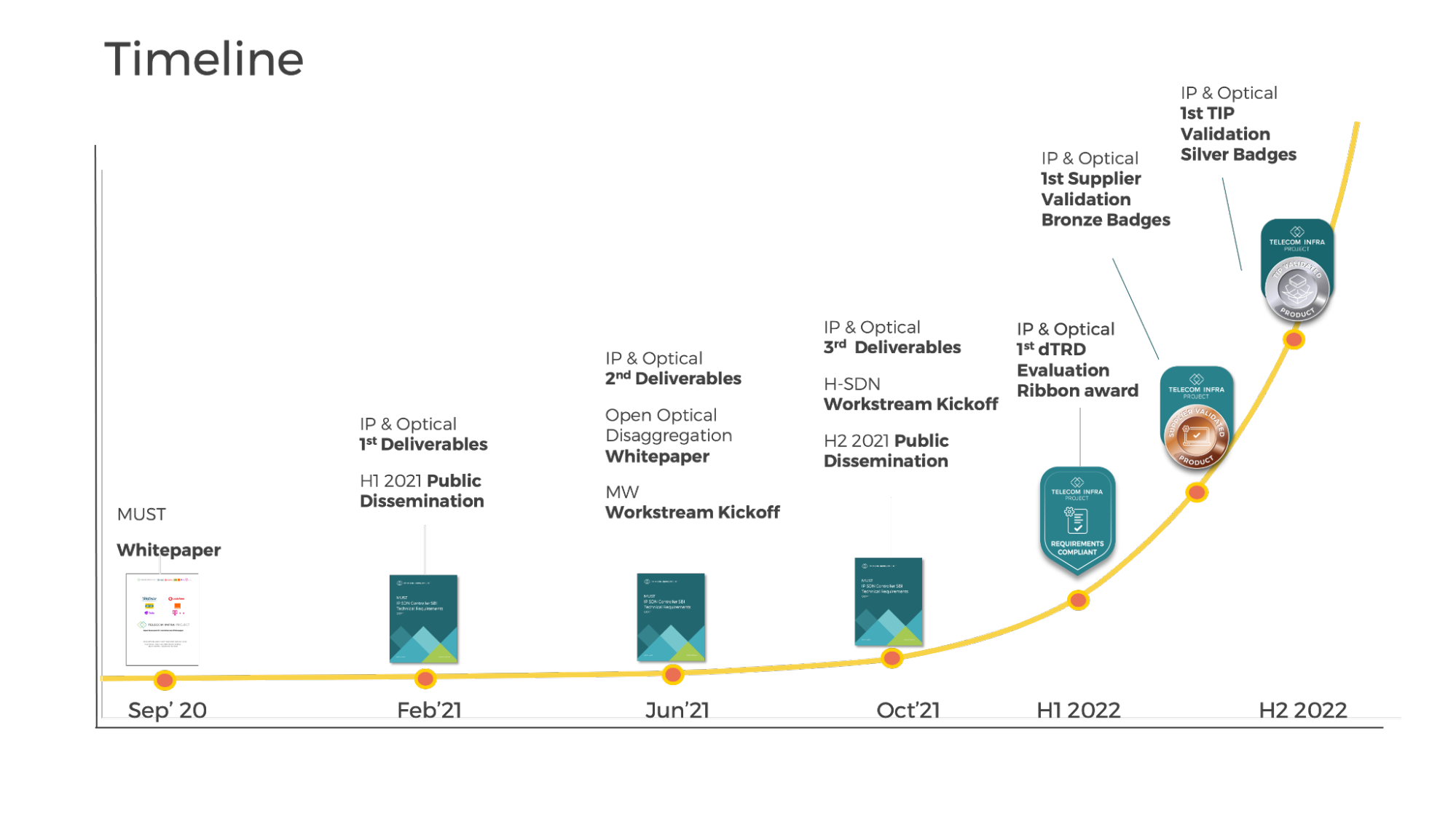

Figure 4: MUST Timeline & Plan
DDBR: Distributed Disaggregated Backbone Router
As we approach the end of the first quarter , we are excited to share updates from the Distributed Disaggregated Backbone Router initiative After conducting a detailed analysis of technology supplier responses, the subgroup awarded the first TIP’s Requirements Compliant ribbons to the following suppliers: Delta Networks Inc, Drivenets and Ufi Space.
The different HW/SW combinations will now be taken into consideration for lab test and validation before moving towards commercial deployments.
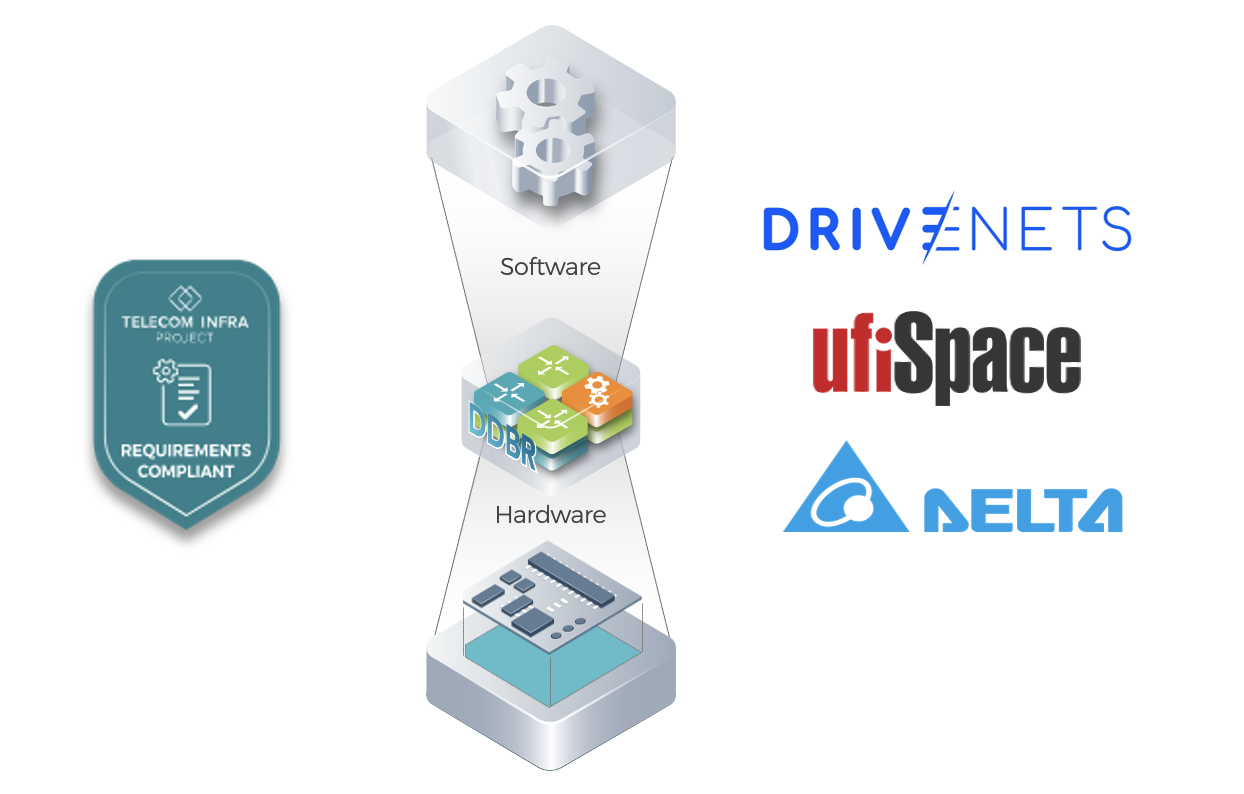
Figure 5: DDBR Requirements Compliant Technology Providers
DCSG: Disaggregated Cell Site Gateway
In other related updates, several new DCSG solutions have been added to TIP Exchange. Ceragon Networks DCSG Network Operating System (NOS) and Hardware solutions have been awarded a TIP Requirements Compliant ribbon. Additionally, Edgecore Networks was awarded a new TIP Requirements Compliant ribbon for its newest HW solution and Adva was awarded a ribbon for its Ensemble Activator NOS.
Adoption
We are also excited to share a number of important updates both in terms of trials, commercial deployments and other key Project Group deliverables. Starting with one of the most active initiatives within OOPT, we are encouraged to see momentum rapidly building behind our Disaggregated Cell Site Gateway (DCSG) solutions with a number of trials and deployments announced across multiple regions from multiple mobile operators and ISPs.
The number of trials and deployments in which operators are usingTIP incubated technologies continues to grow.
Looking into the future, the project group will continue to validate solutions against the existing requirements and will continue to explore new open and disaggregated technologies that can make transport networks faster, more efficient and reliable.
Get involved: The Open Optical & Packet Transport Project Group welcomes other companies to join and contribute to its efforts. Find out more here.
